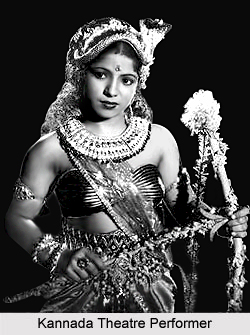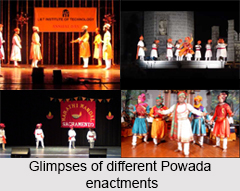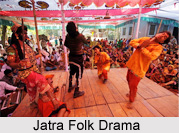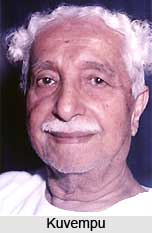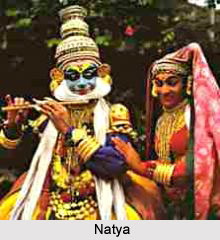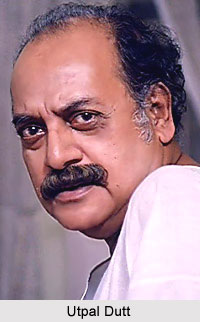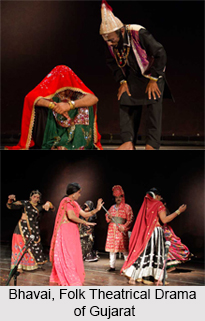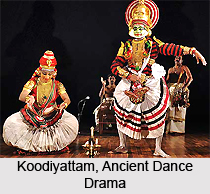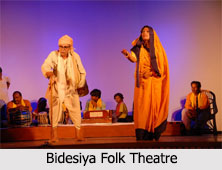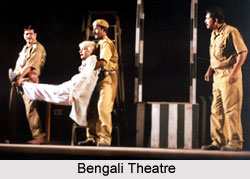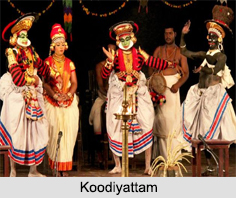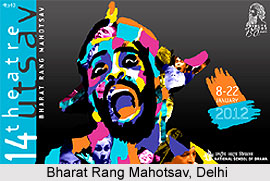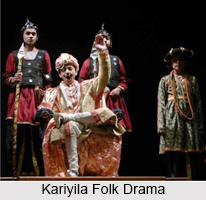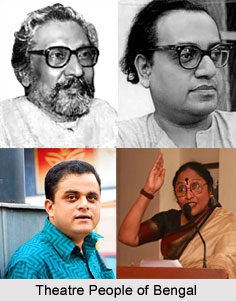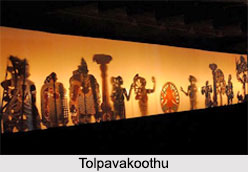 In the south Indian state of Kerala, the traditional shadow puppet theatre form of Tolpavakoothu occupies an important spot among the other folk theatres of Kerala. This art form of Tolpavakoothu is especially popular in the districts of Palakkad, Thrissur and Malappuram in Kerala.
In the south Indian state of Kerala, the traditional shadow puppet theatre form of Tolpavakoothu occupies an important spot among the other folk theatres of Kerala. This art form of Tolpavakoothu is especially popular in the districts of Palakkad, Thrissur and Malappuram in Kerala.
Tolpavakoothu is primarily performed in temples using leather puppets as a ritual dedicated to Goddess Bhadrakali. It is also performed in specially built theatres called the "koothumandams".
Etymology of Tolpavakoothu
The art form of Tolpavakoothu has been in existence in Kerala for over 500 years. Combination of three Malayalam words, "tol" means leather, "pava" means figures and "koothu" or "kuthu" means to dance or play, together the word Tolpavakoothu is formed which means the dance of the leather figurines.
History of Tolpavakoothu
The art form of Tolpavakoothu is believed to have originated in the 9th century AD and uses Kamba Ramayana as its basic text. As per legends, it is believed that Tolpavakoothu was performed on Goddess Bhadrakali"s behest, who could not witness Ravana`s defeat as she was fighting the demon Darika. Hence, when the act is performed in temples, an idol of the Goddess is usually placed on a pedestal in front of the arena where it is staged. Tolpavakoothu is mainly performed in languages like Tamil, Malayalam and Sanskrit.
Performance of Tolpavakoothu
The Tolpavakoothu performances are conducted as part of the annual festival in temples, where the puppet show is held almost every day of the festivities. The stage built for the performance, a koothumadam is a separate 42 ft long stage on which a screen is set up and behind a piece of white cloth, the puppets are held.
The screen on stage is illuminated by 21 lighted lamps, made out of coconut shelves, filled with coconut oil, provided with cotton wicks and placed equidistant from each other on the Vilakku madam or a wooden beam behind the curtain. A Tolpavakoothum performance usually lasts for a maximum of 71 days and a minimum of 7 days, depending on the tradition at the temple where it is performed.
The performance of Tolpavakoothu is accompanied by the recitation of slokas and musical instruments like chenda, maddalam, ezhupara, ilathalam, conch and cherukuzhal.
Puppets of Tolpavakoothu
Painted in vegetable dye, the puppets are made of deer skin and are held by a thin stick in one hand while the limbs are manipulated by a thinner stick held in another hand of the puppeteer. The thickness results in a lack of translucency, unlike other puppets in Indian shadow theatre. Puppets with movable parts are used for the roles of important figures, while less important characters are represented by puppets with immovable parts.
Puppeteers of Tolpavakoothu
Puppeteers who have done intensive training, gained a deep knowledge of Malayalam, Tamil and Sanskrit, studied the Kamba Ramyana and well versed in Vedas and Puranas are given the honorific title of "pulavar". Often time, these pulavars are also trained in Ayurveda and classical music.
Tolpavakoothu in Modern Times
Tolpavakoothu performances are no longer confined only to temples but are also held in secular venues such as colleges and at the International Film Festival of Kerala. With changing times, the themes of these performances have evolved ranging from secular topics to communal amity and stories from India"s freedom struggle.







